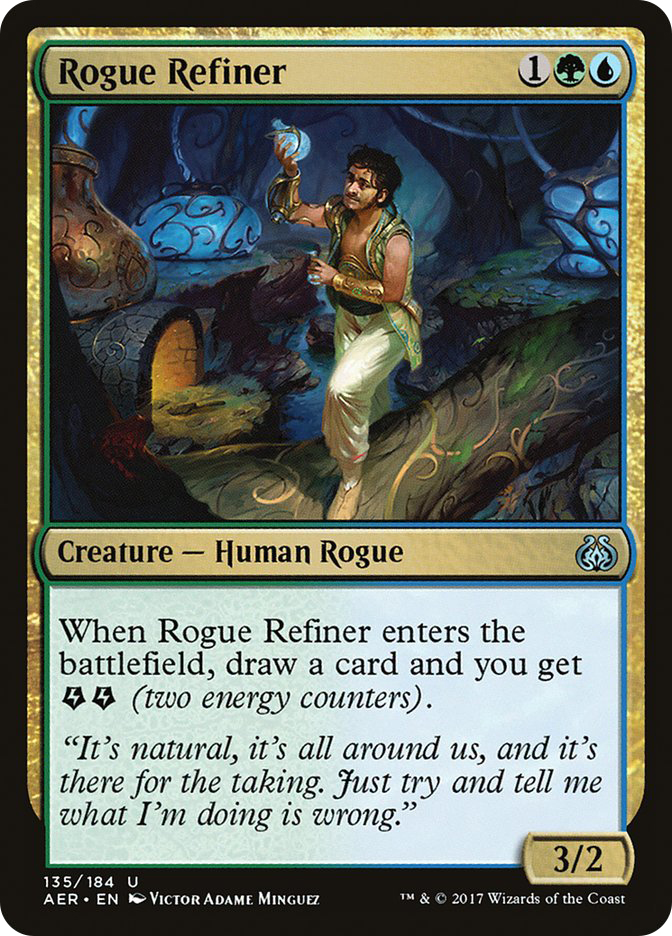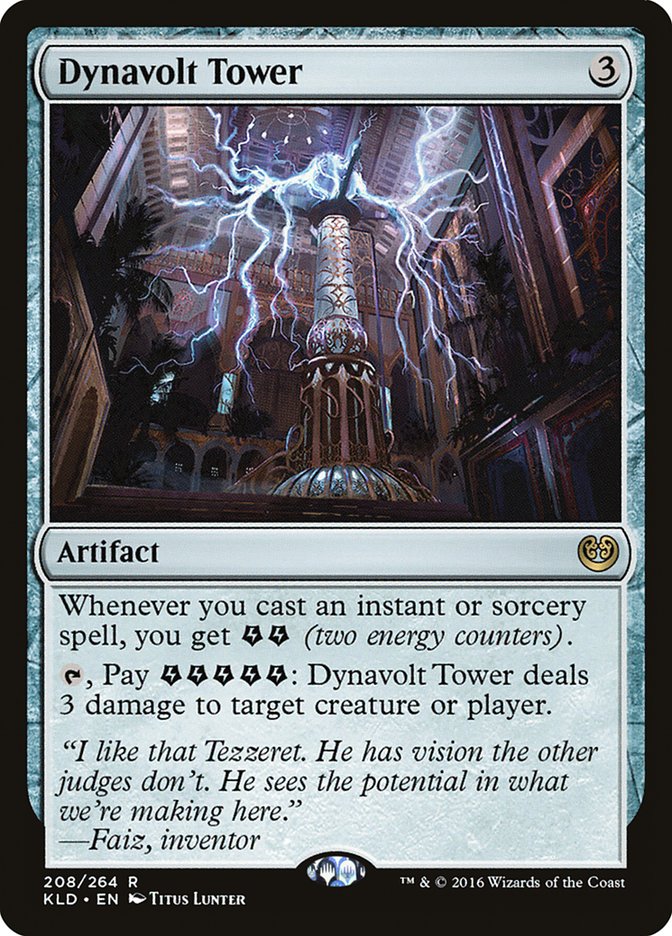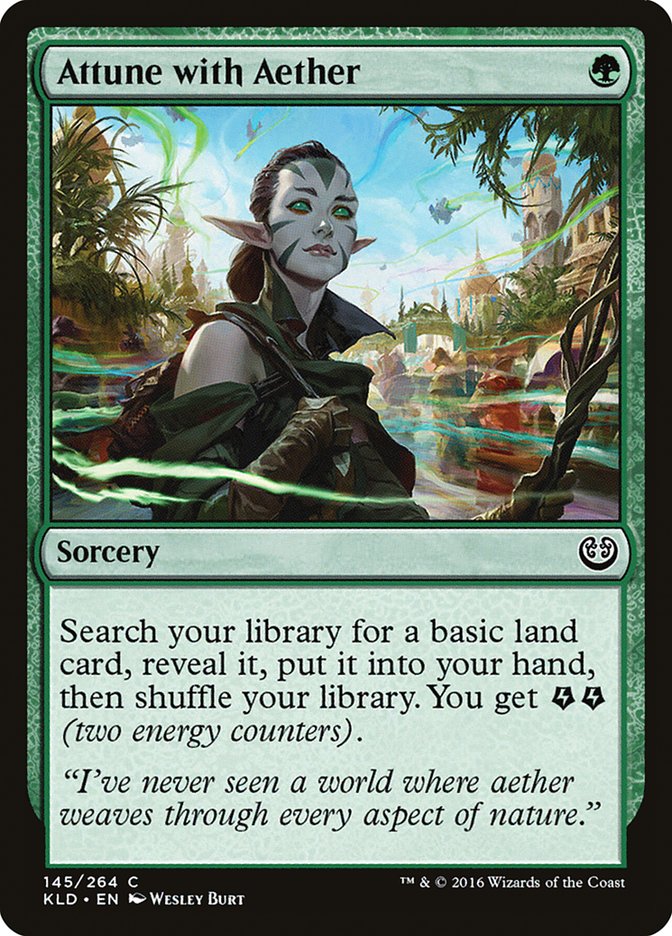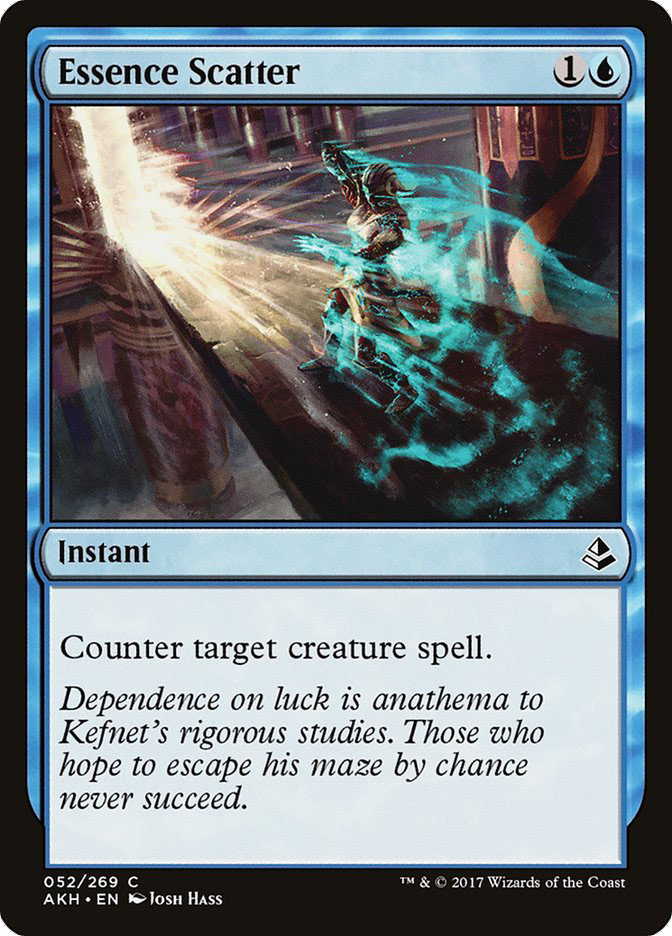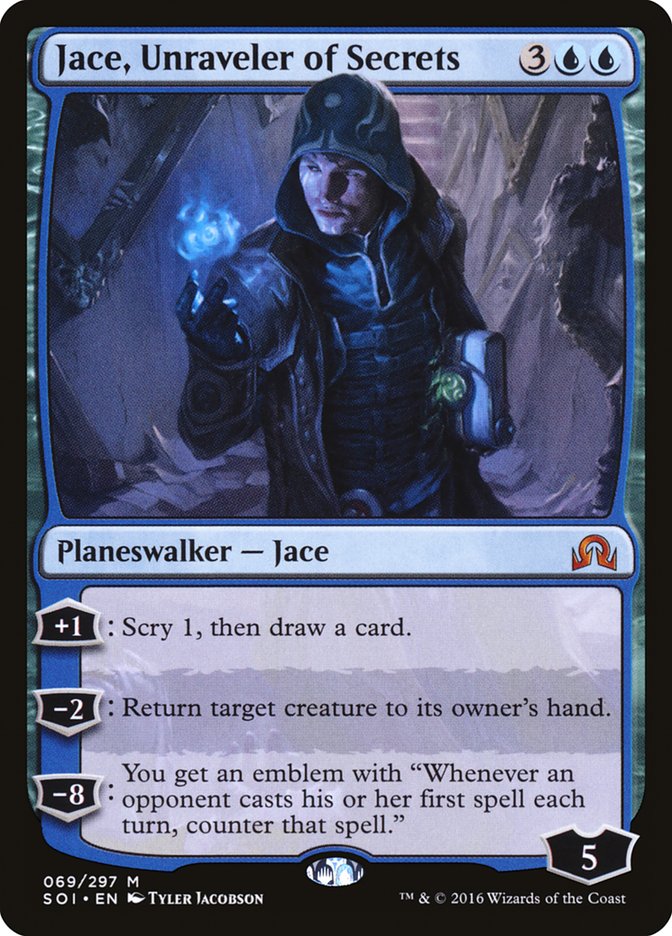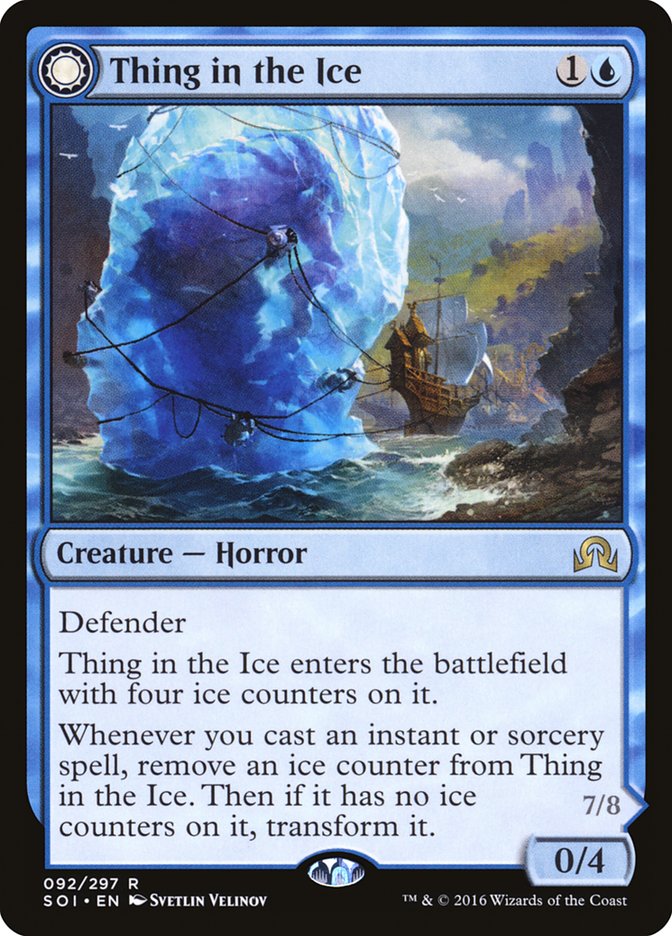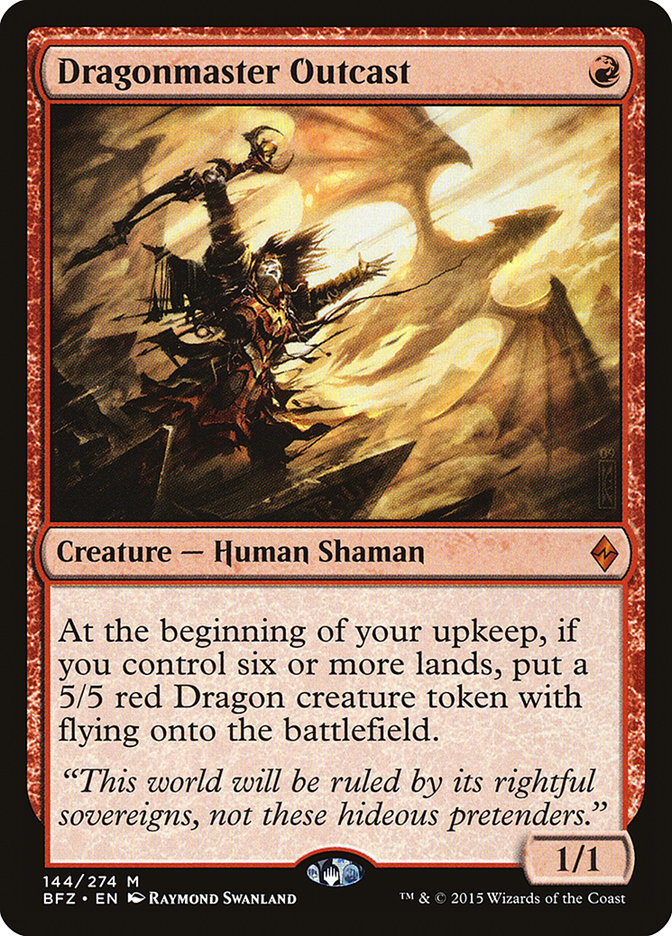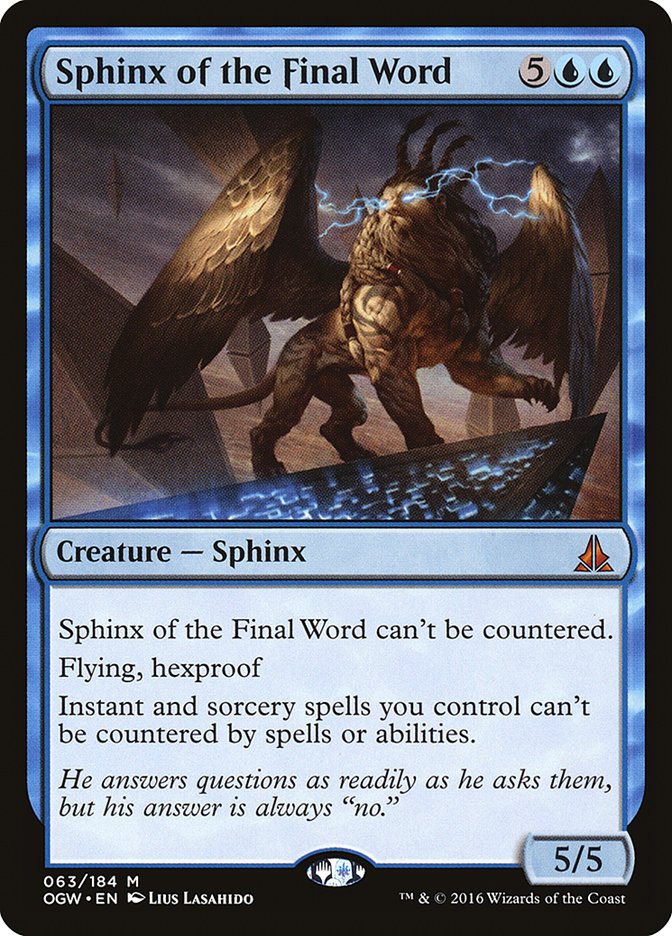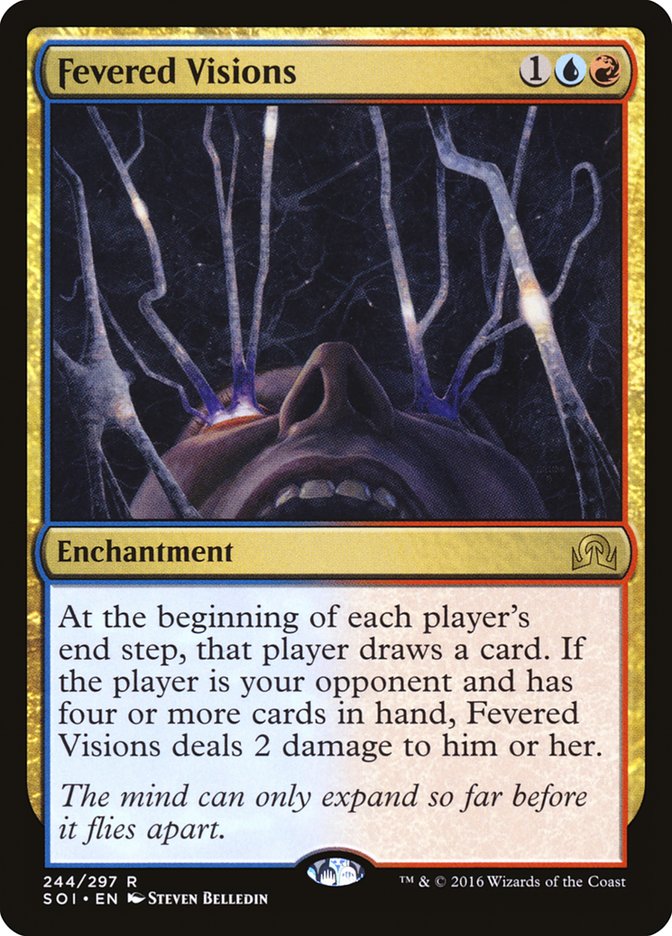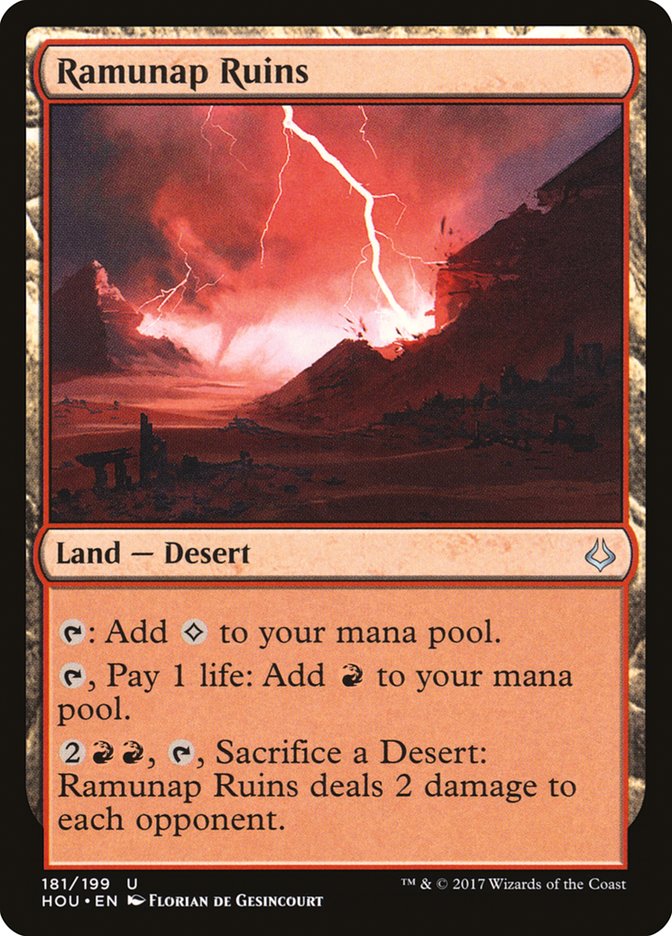SCG Cincinnati is in the books, and the Standard format is shaping up to be diverse as well as interesting. There are a lot of archetypes coming out of the Top 64, and I am excited to give most of them a try. For now though, I’ve been working on a little project. Some might call it a masterpiece (no one); others might call it a worse version of an already existing deck. Others still might call it a decent idea, but not worth giving it a shot, while there are others who would maybe say maybe.
Whatever, haters gonna hate.
Welcome back to the Temur Box, Standard style!
Creatures (7)
Planeswalkers (1)
Lands (23)
Spells (29)

This deck is very similar to the U/R Control deck we’ve come to know and love (hate) over the last eight or nine months. Torrential Gearhulk is an impressive card, giving blue decks a big threat to draw to later in the game that lets them re-up on their best instant. Some people have called it Fatcaster Mage (me), but mostly it has been heralded as the bane of your fifth or sixth turn. If you don’t cast anything, they get to rebuy Glimmer of Genius or some other draw spell. If you do cast something, they usually get to hit it with an Essence Scatter or some other counterspell.
So why this deck? And why this version of the deck?
That is a tough question to answer. Mostly, I just like playing the cards I like, regardless of the format. At its heart, this is a control deck, for sure, but there are a lot of matchups and situations where you play more of a midrange game, looking to take advantage of some of your earlier threats. Hitting your land drops is much easier in this deck than traditional U/R Control, since you have access to Attune with Aether and multiple cycling cards. And at the center of it all is this innocuous little creature.
I can’t say enough good things about this card. It was one of my favorite spells to cast in the Aetherworks Marvel days because it helped you bridge the gap between the early turns of the game into the later turns where you got to utilize your card and mana advantage. It was a fantastic spell after sideboarding when your opponent would be trying to hit you with various discard effects or strip you of your Aetherworks Marvel outright. I can’t tell you how many games I’ve won by just casting Rogue Refiner early and then riding a few removal spells and card draw spells to victory.
While Rogue Refiner won’t usually get the job done by itself, it almost always takes a spell from the opponent while drawing you a card, which is huge for a deck like this. They will likely be spending an Abrade or Harnessed Lightning to deal with it, which can free up your Torrential Gearhulk or Dynavolt Tower later in the game.
The fact that they usually have to kill your Rogue Refiner is the main draw of the card. Essence Scatter, Harnessed Lightning, Abrade: these are not dead cards against your deck. They will all be cast at some point, and usually at Torrential Gearhulk. And since you are usually relying on Torrential Gearhulk to close out games, having your big threat take the hit is much less appealing than having your early creature take the bullet.
My favorite part of the Aetherworks Marvel deck that played Censor and Glimmer of Genius was that you got to play a draw-go game during the early turns. That’s the basis of this deck, though the end-game is not nearly as powerful. Instead of casting Ulamog, the Ceaseless Hunger, we’re just mopping up creatures with removal spells and hoping Torrential Gearhulk can finish things off. Essence Scatter or Censor on the second turn followed by either Rogue Refiner or Dynavolt Tower is an ideal start for the deck.
Some matchups will require waiting a few more turns to cast either of these spells so that you can sit on Supreme Will, but a lot of decks don’t have a huge three-drop component (when you’re on the play). Holding up Supreme Will will be much more important on the draw, since you’re worried about them resolving some planeswalker.
This is the most important new card that gave this deck some legs. While it will often be a counterspell in the early turns, it does a fine job of playing the Disallow role against more expensive spells from your opponent. And in matchups or situations where a counterspell isn’t necessary, you can use it to dig for a Torrential Gearhulk or even Dynavolt Tower. Supreme Will changes some of the play patters for Torrential Gearhulk, making it unnecessary for you to cast Glimmer of Genius before you get to your Torrential Gearhulk turn.
Instead, using Torrential Gearhulk to cast Supreme Will as either a counterspell or draw spell is more than fine. When you’re casting Torrential Gearhulk to rebuy Glimmer of Genius, all you’re really looking for are more copies of Glimmer of Genius or Torrential Gearhulk, and Supreme Will does a fine replacement job of this.
Supreme Will is a stellar example of a versatile blue card. Like Censor, it can be a potent counterspell at the right time, but when that part of the card loses value, you have the ability to cash it in for an upgrade. The combination of Supreme Will and Censor allows you to alleviate some pressure put on control decks by playing too many reactive cards. Instead of rotting in your hand while your opponent has one or two threats on the battlefield, it can dig for answers to those threats. That is not something I’m used to as a control player and a welcome change to how the archetype operates.
Aside from Rogue Refiner, Attune with Aether is one of the strongest enablers in the format, and the other main reason to play green. While Attune with Aether doesn’t look special on paper, basically everyone knows as this point how good the card actually is. Energy-driven strategies play a much different early-game when they start with Attune with Aether versus when they don’t, and this deck is not much different. While you’re not spending that energy to activate Whirler Virtuoso or some other big green monster, you are using that energy in different ways. Making your Harnessed Lightning become Doom Blade is not irrelevant in a lot of scenarios, and being a sorcery that triggers Dynavolt Tower is also fantastic at basically any point in the game.
Speaking of Dynavolt Tower, I wasn’t really sure how good this card was in my initial builds of the deck. Most of the time, the first Dynavolt Tower won’t do much. It might peck your opponent for a few points of damage or pick off an early threat from the opponent, but it will usually meet an end at the hands of Abrade. The trick is eventually overwhelming cards like Abrade, which is not that difficult to do.
Dynavolt Tower does get sideboarded out quite a bit, which I think is more than fine in a lot of situations. You leave your opponent with some dead cards for most of the game, and you’re usually bringing in some planeswalkers as additional threats that don’t take splash damage from all the artifact destruction. Torrential Gearhulk will be a less reliable win condition, but that’s why we’re shifting gears in the first place. Since Dynavolt Tower is no longer a reliable win condition and can’t draw us cards, it hits the bench if there aren’t a lot of opposing creatures with low toughness.
Now, I will say that sideboarding with this deck is not always easy. Essence Scatter is a card that I have a tough time deciding on whether or not it stays in or comes out. It has a target against most decks, including the U/R Control deck, and hitting their Torrential Gearhulk can end the game on the spot. However, when your early plan is to develop your mana and hopefully play out a creature or two, Essence Scatter kind of just rots in your hand until you have a big counter war five or ten turns later. While it will usually help you win that counter war, I’m not sure you wouldn’t just overrun your opponent with cheap threats and counterspells before you get to that situation.
Jace, Unraveler of Secrets and Tireless Tracker go a long way in helping you develop some early pressure against control opponents and are pretty easy to protect for a turn or two, which can make all the difference. Your opponent will likely have to choose between leaving in a healthy amount of removal spells, counterspells, or card draw. If they pick incorrectly, a Tireless Tracker or Jace, Unraveler of Secrets can steal the game by itself.
And that’s my major draw for this deck. I like being the control player that can put pressure on my opponent in the mirror match. We have so many cards in common that do the same thing, from counterspells to Glimmer of Genius to Harnessed Lightning, we’re fighting a mirror where a lot of our spells butt heads. You need something unique in the mirror to take over, and I would much prefer doing that in the early turns of the game.
But what about Thing in the Ice? What about Dragonmaster Outcast? Well, these cards are fine additions to the U/R Control player’s sideboard, since they are cheap threats that can ultimately steal games, and they’re fairly easy to protect with counterspells, but I’ve found that neither is guaranteed to do anything. In fact, it is common knowledge now that most U/R Control players bring in some number of these cards in the mirror, so I am incentivized to leave in most of my Harnessed Lightnings, if not all of them. And because Torrential Gearhulk is so important, I am also inclined to leave in some number of Essence Scatter.
So for that reason, and many others, I’d much rather rely on Jace, Unraveler of Secrets as my end-game. The card advantage gained is unmatched, and it isn’t hard to stick since you’re usually casting it on the seventh or eighth turn after baiting them with a Torrential Gearhulk. Sure, the opponent countering your Torrential Gearhulk is rough, but they can still kill it after you draw some cards with Glimmer of Genius. Jace, Unraveler of Secrets is much harder to attack with conventional removal spells.
The Control Mirrors
My win percentage against the U/R Control deck is unprecedented, and I give most of that credit to Rogue Refiner and Jace, Unraveler of Secrets. While Rogue Refiner is nothing exciting on paper, it provides you with a nice little two-for-one in the early turns of the game. It helps you hit your land drops and forces them to commit a resource to dealing with it (usually). If they don’t, feel free to ride it as long as you can. Jace, Unraveler of Secrets is a much stronger weapon, but it costs two more mana. That is a tall order in a control mirror, but you can usually find a spot where your opponent needs to react at the end of their turn, and you get to untap and cast it with a counterspell on backup. And at that point, the game is most likely over.
The only game I’ve lost after resolving a Jace, Unraveler of Secrets against U/R Control involved an opposing Sphinx of the Final Word, which I had no real way of dealing with. I don’t plan on having too many ways to deal with it, because it isn’t a card that sees much sideboard play, but I could see that changing in the future. If people are playing more of that card, I might have to change gears and find a different way of coming at the matchup. Maybe a Sphinx of the Final Word of my own? Maybe just bringing in Summary Dismissal? I don’t know yet, but I don’t think it’ll be too tough to figure out. I’ve already beaten a resolved Sphinx of the Final Word three times just by beating down with Rogue Refiner and Tireless Tracker. It isn’t easy, but it isn’t the end of the world.
The Rest of the Format
I’m not going to lie; this deck isn’t for the faint of heart. I’ve lost a few games here and there by just playing the wrong land or sideboarding one or two cards incorrectly. Like with most control decks, mistakes aren’t very forgiving. Dynavolt Tower decks tend to use every part of the deck, and sequencing one turn incorrectly can have cascading effects that ruin the rest of your development.
What I do like about this deck is that not a lot of people are prepared for it in a traditional sense. Sure, there is some splash damage on some of your hinge cards like Abrade versus Dynavolt Tower, but I’m not that worried about it. Sideboarding out too much removal could lead your opponent to losing straight-up to Tireless Tracker. Sideboarding in too much removal could lead them to not having enough pressure in the early turns of the game.
It is hard to overwhelm you thanks to Rogue Refiner, Dynavolt Tower, and Radiant Flames, but not impossible. In fact, I’ve lost quite a few matches to the Mono-Red deck already, and I don’t know if the matchup is particularly close.
Creatures (28)
- 2 Eldrazi Obligator
- 2 Reality Smasher
- 3 Thought-Knot Seer
- 4 Falkenrath Gorger
- 2 Kari Zev, Skyship Raider
- 2 Glorybringer
- 1 Hazoret the Fervent
- 4 Ahn-Crop Crasher
- 4 Soul-Scar Mage
- 4 Earthshaker Khenra
Planeswalkers (2)
Lands (24)
Spells (6)

Since most of their creatures have haste, even a well-timed Radiant Flames will only go so far. Ramunap Ruins can close games if you take too much damage in the early turns. Flooding out isn’t really a problem for them either, which has always been an issue of aggressive decks in the past. Now, if you draw six lands, that means you’re able to throw two of them at your opponent’s face via Ramunap Ruins or just Eternalize your Earthshaker Kenra.
Lifegain cards aren’t all that great against the deck either, since most of their cards stick to the battlefield. Ideally, we would want something like Kitchen Finks to bridge the gap, but that card doesn’t really exist in the format right now. Plus, they have six ways of just exiling it, so I don’t even know how good that would actually be. My gut tells me that I’m not going to be able to beat that deck with this archetype, no matter how hard I try, so I’m best off hoping I dodge it when I play this deck in a tournament.
As for the rest of the format, I feel pretty comfortable. Ramp strategies can be troublesome at times, but if you’re able to effectively leverage your counterspells to stop Hour of Promise, they have a hard time casting their big baddies. W/U Monument can have a really tough time stopping Dynavolt Tower from taking over the game, but I know all too well just what a W/U Monument deck can do. Any draw that starts with a resolved Oketra’s Monument is going to be insanely hard to beat. In the past, I’ve played Dissenter’s Deliverance in the maindeck, but for now I think I like Abrade the best. It just gives you more spot removal to contain early creatures, but doubles as a fine answer to artifacts. It will be stuck in your hand a lot of times, but I think the good outweighs the bad here.
Run.
Certain enchantments could pose problems moving forward in the future. I’m not positive, but I feel like too many people are forgetting that enchantments exist. Fevered Visions, for example, is almost impossible for this deck to beat. That’s why I’ve added two copies of Appetite for the Unnatural to the sideboard over something like Dissenter’s Deliverance. We need a way to answer it, and I think Appetite for the Unnatural is the best sideboard card for this deck. Sure, you could argue that Root Out is better, simply because it investigates, but the Clue might not be as important for this deck as being an instant. For midrange green decks, I would absolutely lean toward Root Out.
I don’t have all the answers. In all honesty, I don’t have many answers at all. This format is fresh, and I haven’t gotten to play nearly as much of it as I want to. I’ve gotten about 30 matches under my belt with Temur (Box) Tower, and I’m really starting to like where it’s at. My head is telling me to try other things, but my heart keeps bringing me back to the Temur Box. I’ll be sure to switch decks when I start losing a bunch, but that hasn’t happened yet, and I honestly hope it never does. I love playing with this deck more than I’ve liked playing any other deck in Standard since U/R Goggles last year. Maybe that isn’t saying much since Felidar Guardian and Aetherworks Marvel have dominated the format over the last six months, but who’s counting?
This weekend is SCG Atlanta, and I’m a little sad that I can’t make the trip, but hopefully one of you takes this deck and helps your team dominate the Standard portion. If you’re a control player at heart, give it a shot. You won’t be disappointed. Well, you might be disappointed if all your opponents start off the game with Ramunap Ruins.
Sorry in advance!


